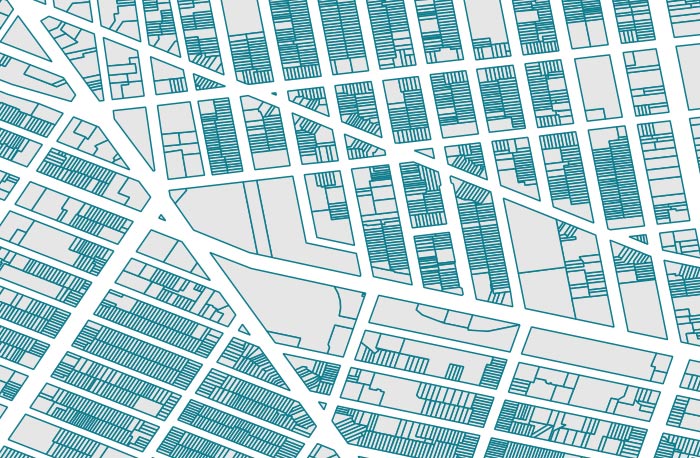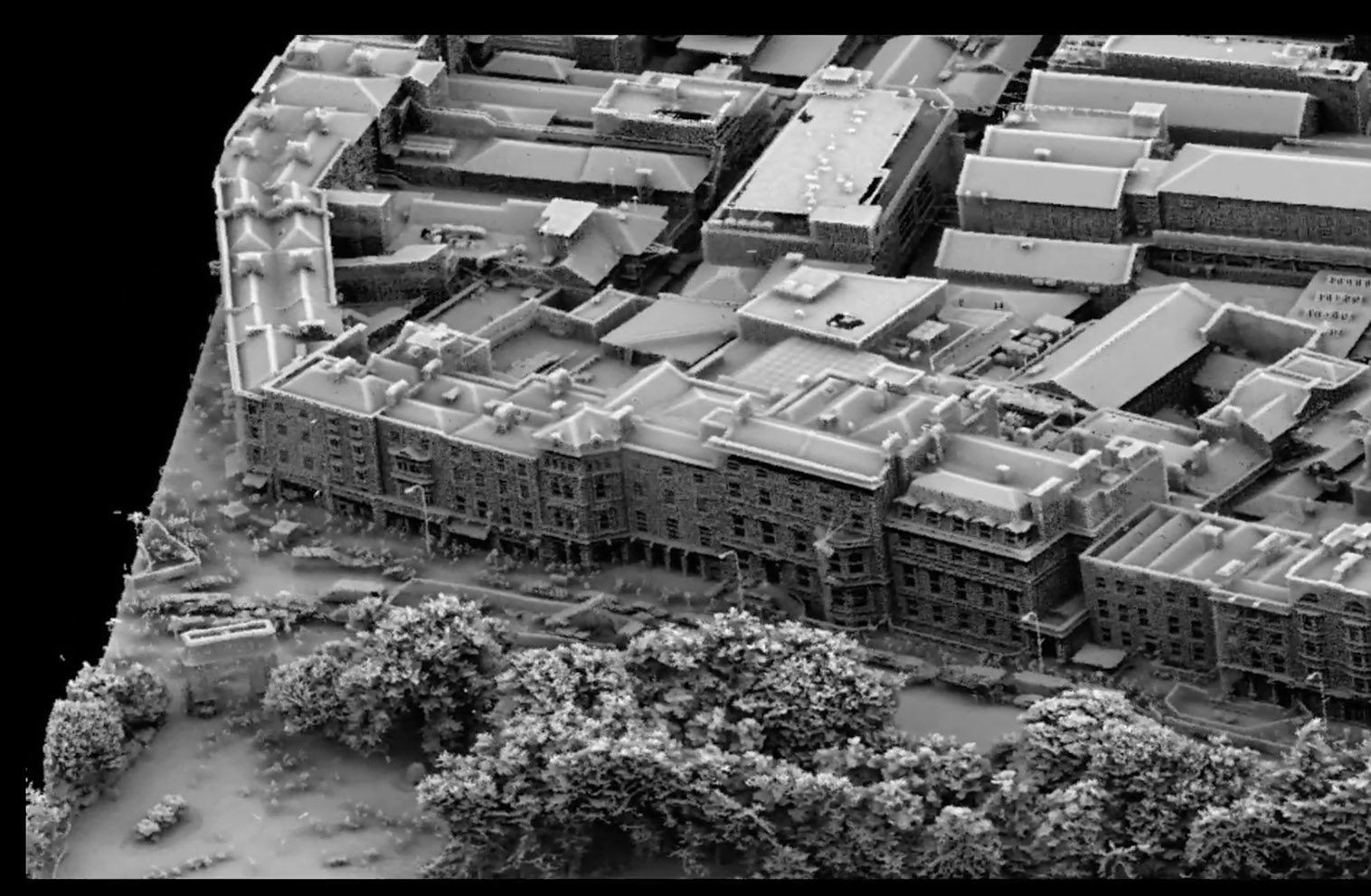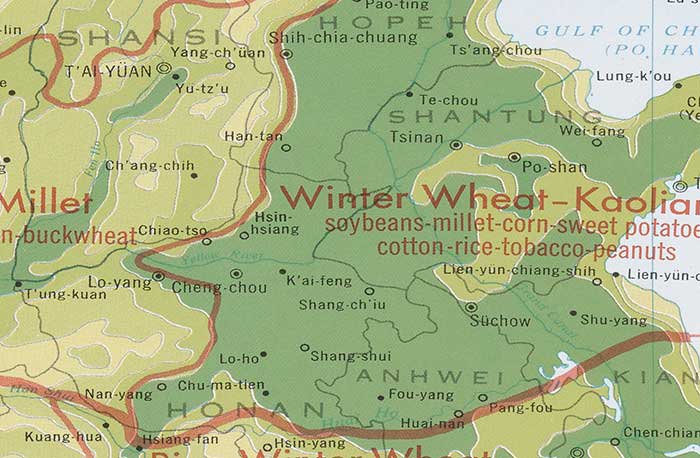View Metadata
NLCD Land Cover, New York, 1992
- Identification Information
- Data Quality Information
- Spatial Data Organization Information
- Spatial Reference Information
- Entity and Attribute Information
- Distribution Information
- Distribution Information
- Metadata Reference Information
- Identification Information
- Citation
- Originator
- U.S. Geological Survey
- Publication Date
- 20001011
- Title
- NLCD Land Cover, New York, 1992
- Geospatial Data Presentation Form
- raster digital data
- Series Information
- Series Name
- National Land Cover Database
- Issue Identification
- 1992 Land Cover
- Publication Information
- Publication Place
- Sioux Falls, SD
- Publisher
- U.S. Geological Survey
- Other Citation Details
- References: Huang, C., L. Yang, C. Homer, B. Wylie, J. Vogelman and T. DeFelice, At-Satellite Reflectance: A First Order Normalization of Landsat ETM+ Images, USGS White Paper.. Loveland, T. R., and Shaw D. M., 1996, Multi-resolution land characterization: building collaborative partnerships, in GAP Analysis: A Landscape Approach to Biodiversity Planning, J. M. Scott, T. H. Tear, and F. W. Davis, Editors, American Society for Photogrammetry and Remote Sensing, Bethesda, Maryland, p. 79-85. Riitters, K.H., Wickham, J.D., O'Neill, R.V., Jones, K.B., Smith, E.R., Coulston, J.W., Wade, T.G., and Smith, J.H. 2002. Fragmentation of continental United States forests. Ecosystems, 5: 815-822. Riitters, K.H., J.D. Wickham, J.E. Vogelmann, and K.B. Jones. 2000. National land-cover pattern data. Ecology 81: 604; Ecology 81:604. Smith, J.H., Wickham, J.D., Stehman, S.V., and L. Yang, Impacts of patch size and land-cover heterogeneity on thematic image classification accuracy Photogrammetric Engineering and Remote Sensing, Vol. 68, No. 1, 65-70. Smith, J., Stehman, S., Wickham, J., Yang, L, Effects of landscape characteristics on land-cover class accuracy. Remote Sensing of Environment 84 (2003) 342-349. Stehman, S.V., Czaplewski, R.L., Nusser, S.M., Yang, L., and Zhu, Z. Combining accuracy assessment of land -cover maps with environmental monitoring programs. Environmental Monitoring and Assessment, 64: 115-126. Stehman, S., Wickham, J., Smith, J. Yang, L, Thematic accuracy of the 1992 National Land-Cover Data for the eastern United States: Statistical methodology and regional results. Remote Sensing of Environment 86 (2003) 500-516. Stehman, S.V., J.D. Wickham, L. Yang, and J.H. Smith, Assessing the accuracy of large-area land cover maps: Experiences from the Multi-resolution Land-cover Characteristics (MRLC) project. Proceedings of the 4th International Symposium on Spatial Accuracy Assessment in Natural Resources and Environmental Sciences, Delft University Press, The Netherlands, 601-608. Vogelmann, J.E., T.L. Sohl, P.V. Campbell, and D.M. Shaw. 1998. Regional land cover characterization using Landsat Thematic Mapper data and ancillary data sources. Environmental Monitoring and Assessment 51: 415-428. Vogelmann, J.E., T. Sohl, and S.M. Howard. 1998. Regional characterization of land cover using multiple sources of data. Photogrammetric Engineering Remote Sensing 64: 45-57. Vogelmann, J.E. and Wickham, J., 2000, Implementation strategy for production of national land cover data (NLCD) from the Landsat 7 Thematic Mapper Satellite, EPA/600/R-00/051 (NTIS PB2001-101756), Las Vegas, NV.: U.S. EPA. Vogelmann, J.E., S.M. Howard, L. Yang, C. R. Larson, B. K. Wylie, and J. N. Van Driel, 2001, Completion of the 1990s National Land Cover Data Set for the conterminous United States, Photogrammetric Engineering and Remote Sensing 67:650-662. Wickham, J.D., S.V. Stehman, J.H. Smith, L. Yang. 2004. Thematic Accuracy of the 1992 National Land-Cover Data for the Western United States. Remote Sensing of Environment, Vol. 91, pp. 452-468. Wylie, B., C. Huang, L. Yang and C. Homer, "Evaluation of Optimal Sets of Landsat TM Spectral Deriviatives for Land Cover Classification", USGS Draft White Paper, 2001. Yang, L., Stehman, S., Smith, J., Wickham, J. 2001. Thematic accuracy of MRLC land cover for the eastern United States, Remote Sensing of Environment 76, 418-422. Yang, L., Stehman, S. V., Wickham, J.D., Smith, J.H., Van Driel, N.J, Thematic validation of land cover data of the eastern United States using aerial photography: Feasibility and challenges. Proceedings of the 4th International Symposium on Spatial Accuracy Assessment in Natural Resources and Environmental Sciences, Delft University Press, The Netherlands, 747-754. Zhu, Z., Yang, L., Stehman, S.V., and Czaplewski, R.L., 1999, Chapter 46 - Designing an accuracy assessment for a USGS regional land cover mapping program, in Lowell, Kim, ed., Spatial Accuracy Assessment Land Information Uncertainty in Natural Resources: Chelsea, Michigan, Sleeping Bear Press/Ann Arbor Press, p. 393-398. Zhu, Z., Yang, L., Y., Stehman, S.V., and Czaplewski, R.L, Accuracy Assessment for the U.S. Geological Survey Regional Land-Cover Mapping Program: New York and New Jersey Region Photogrammetric Engineering and Remote Sensing 66, No. 12: pg 1425-1435.
- Online Linkage
- https://cugir.library.cornell.edu/catalog/cugir-008001
- Online Linkage
- http://www.mrlc.gov/
- Abstract
- The National Land Cover Database (NLCD) 1992 Land Cover layer was produced through a cooperative project conducted by the Multi-Resolution Land Characteristics (MRLC) Consortium. The MRLC Consortium is a partnership of federal agencies (www.mrlc.gov), consisting of the U.S. Geological Survey (USGS), the National Oceanic and Atmospheric Administration (NOAA), the U.S. Environmental Protection Agency (EPA), the U.S. Department of Agriculture - Forest Service (USDA-FS), the National Park Service (NPS), the U.S. Fish and Wildlife Service (FWS), the Bureau of Land Management (BLM) and the USDA Natural Resources Conservation Service (NRCS). One of the primary goals of the project is to generate a current, consistent, seamless, and accurate land cover data for the United States at medium spatial resolution. Questions about the NLCD can be directed to the NLCD land cover mapping team at USGS EROS, Sioux Falls, SD (605)594-6151 or mrlc@usgs.gov.
- Purpose
- The goal of this project is to provide the Nation with complete, current and consistent public domain information on its land use and land cover.
- Temporal Extent
- Currentness Reference
- ground condition
- Time Instant
- 1992
- Bounding Box
- West
- -80.035679
- East
- -70.516586
- North
- 45.847801
- South
- 40.086478
- Theme Keyword
- Land Use
- Land Cover
- Theme Keyword Thesaurus
- None
- Theme Keyword
- imageryBaseMapsEarthCover
- environment
- Theme Keyword Thesaurus
- ISO 19115 Category
- Theme Keyword
- landcover
- environment
- Theme Keyword Thesaurus
- CUGIR Category
- Place Keyword
- New York
- Place Keyword Thesaurus
- None
- Temporal Keyword
- Access Restrictions
- None
- Use Restrictions
- None
- Status
- In work
- Maintenance and Update Frequency
- Every 5 years
- Point of Contact
- Contact Organization
- U.S. Geological Survey
- Delivery Point
- USGS EROS
- Delivery Point
- 47914 252nd Street
- City
- Sioux Falls
- State
- SD
- Postal Code
- 57198-0001
- Country
- USA
- Contact Telephone
- 605/594-6151
- Contact Facsimile Telephone
- 605/594-6589
- Contact Electronic Mail Address
- custserv@usgs.gov
- Hours of Service
- 0800 - 1600 CT, M - F (-6h CST/-5h CDT GMT)
- Credit
- U.S. Geological Survey
- Native Data Set Environment
- Microsoft Windows 7 Version 6.1 (Build 7601) Service Pack 1; ESRI ArcCatalog 9.3.1.4000
- Data Quality Information
- Attribute Accuracy Report
- The accuracy of the 1992 National Land-Cover Data (NLCD) map was assessed via a probability sampling design incorporating three levels of stratification and two stages of selection. Agreement between the map and reference land-cover labels is defined as a match between the primary or alternate reference label determined for a sample pixel and a mode class of the mapped 3x3 block of pixels centered on the sample pixel. See Stehman et al, 2003 and Wickham et al., 2004 for details.
- Quantitative Attribute Accuracy Assessment
- Logical Consistency Report
- An unsupervised classification algorithm was used to classify the mosaicked multiple leaf-off TM scenes. Aerial photographs were used to interpret and label classes into land cover categories and ancillary data sources resolved the class confusion. Further land cover information from leaf-on TM data, NWI data, and other sources were incorporated to refine and augment the "basic" classification.
- Completeness Report
- All photo-interpretable data are mapped.
- Horizontal Positional Accuracy Report
- Each Landsat Thematic Mapper image used to create the NLCD was precision terrain-corrected using 3-arc-second digital terrain elevation data (DTED), and georegistered using ground control points. This resulted in a root mean square registration error of less than 1 pixel (30 meters).
- Lineage
- Spatial Data Organization Information
- Direct Spatial Reference Method
- Raster
- Raster Object Information
- Raster Object Type
- Grid Cell
- Row Count
- 16989
- Column Count
- 22610
- Spatial Reference Information
- Horizontal Coordinate System Definition
- Planar
- Map Projection
- Map Projection Name
- Albers Conical Equal Area
- Albers Conical Equal Area
- Standard Parallel
- 29.500000
- Standard Parallel
- 45.500000
- Longitude of Central Meridian
- -96.000000
- Latitude of Projection Origin
- 23.000000
- False Easting
- 0.000000
- False Northing
- 0.000000
- Planar Coordinate Information
- Planar Coordinate Encoding Method
- row and column
- Coordinate Representation
- Abscissa Resolution
- 30.000000
- Ordinate Resolution
- 30.000000
- Planar Distance Units
- meters
- Geodetic Model
- Horizontal Datum Name
- North American Datum of 1983
- Ellipsoid Name
- Geodetic Reference System 80
- Semi-major Axis
- 6378137.000000
- Denominator of Flattening Ratio
- 298.257222
- Entity and Attribute Information
- Entity Type
- Entity Type Label
- Land Cover classification grid cell
- Entity Type Definition
- NLCD Land Cover Layer
- Entity Type Definition Source
- National Land Cover Database
- Attributes
- ObjectID
- Internal feature number (Sequential unique whole numbers that are automatically generated.)
- Definition Source
- ESRI
- Count
- A nominal integer value that designates the number of pixels that have each value in the file; histogram column in ERDAS Imagine raster attributes table (Integer)
- Definition Source
- ESRI
- Value
- Land Cover Class Code Value.
- 11
- Open Water - areas of open water, generally with less than 25 percent or greater cover of water (per pixel).
- 12
- Perennial Ice/Snow - All areas characterized by year-long cover of ice and/or snow.
- 21
- Low Intensity Residential - Includes areas with a mixture of constructed materials and vegetation. Constructed materials account for 30-80 percent of the cover. Vegetation may account for 20 to 70 percent of the cover. These areas most commonly include single-family housing units. Population densities will be lower than in high intensity residential areas.
- 22
- High Intensity Residential - Includes heavily built up urban centers where people reside in high numbers. Examples include apartment complexes and row houses. Vegetation accounts for less than 20 percent of the cover. Constructed materials account for 80-100 percent of the cover.
- 23
- Commercial/Industrial/Transportation - Includes infrastructure (e.g. roads, railroads, etc.) and all highways and all developed areas not classified as High Intensity Residential.
- 31
- Bare Rock/Sand/Clay - Perennially barren areas of bedrock, desert, pavement, scarps, talus, slides, volcanic material, glacial debris, and other accumulations of earthen material.
- 32
- Quarries/Strip Mines/Gravel Pits - Areas of extractive mining activities with significant surface expression.
- 33
- Transitional - Areas of sparse vegetative cover (less than 25 percent that are dynamically changing from one land cover to another, often because of land use activities. Examples include forest clearcuts, a transition phase between forest and agricultural land, the temporary clearing of vegetation, and changes due to natural causes (e.g. fire, flood, etc.)
- 41
- Deciduous Forest - Areas dominated by trees where 75 percent or more of the tree species shed foliage simultaneously in response to seasonal change.
- 42
- Evergreen Forest - Areas characterized by trees where 75 percent or more of the tree species maintain their leaves all year. Canopy is never without green foliage.
- 43
- Mixed Forest - Areas dominated by trees where neither deciduous nor evergreen species represent more than 75 percent of the cover present.
- 51
- Shrubland - Areas dominated by shrubs; shrub canopy accounts for 25-100 percent of the cover. Shrub cover is generally greater than 25 percent when tree cover is less than 25 percent. Shrub cover may be less than 25 percent in cases when the cover of other life forms (e.g. herbaceous or tree) is less than 25 percent and shrubs cover exceeds the cover of the other life forms.
- 61
- Orchards/Vineyards/Other - Orchards, vineyards, and other areas planted or maintained for the production of fruits, nuts, berries, or ornamentals.
- 71
- Grasslands/Herbaceous - Areas dominated by upland grasses and forbs. In rare cases, herbaceous cover is less than 25 percent, but exceeds the combined cover of the woody species present. These areas are not subject to intensive management, but they are often utilized for grazing.
- 81
- Pasture/Hay - Areas of grasses, legumes, or grass-legume mixtures planted for livestock grazing or the production of seed or hay crops.
- 82
- Row Crops - Areas used for the production of crops, such as corn, soybeans, vegetables, tobacco, and cotton.
- 83
- Small Grains - Areas used for the production of graminoid crops such as wheat, barley, oats, and rice.
- 84
- Fallow - Areas used for the production of crops that are temporarily barren or with sparse vegetative cover as a result of being tilled in a management practice that incorporates prescribed alternation between cropping and tillage.
- 85
- Urban/Recreational Grasses - Vegetation (primarily grasses) planted in developed settings for recreation, erosion control, or aesthetic purposes. Examples include parks, lawns, golf courses, airport grasses, and industrial site grasses.
- 91
- Woody Wetlands - Areas where forest or shrubland vegetation accounts for 25-100 percent of the cover and the soil or substrate is periodically saturated with or covered with water.
- 92
- Emergent Herbaceous Wetlands - Areas where perennial herbaceous vegetation accounts for 75-100 percent of the cover and the soil or substrate is periodically saturated with or covered with water.
- Definition Source
- NLCD Legend Land Cover Class Descriptions
- Distribution Information
- Format Name
- GeoTIFF
- Format Name
- metadata
- Format Name
- HTML metadata
- Format Name
- OGC:WMS
- Distributor
- Albert R. Mann Library
- Online Access
- https://cugir-data.s3.amazonaws.com/00/80/01/cugir-008001.zip
- Online Access
- https://cugir-data.s3.amazonaws.com/00/80/01/fgdc.xml
- Online Access
- https://cugir-data.s3.amazonaws.com/00/80/01/fgdc.html
- Online Access
- https://cugir.library.cornell.edu/geoserver/cugir/wms?version=1.1.0request=GetMaplayers=cugir008001bbox=-80.32125179,39.91363831,-70.23101321,46.02064068999999width=256height=154srs=EPSG:4326format=image/png
- Name
- Name
- Distribution Information
- Format Name
- ERDAS
- Distributor
- U.S. Geological Survey
- Online Access
- http://www.mrlc.gov/
- Name
- Name
- Metadata Reference Information
- Metadata Date
- 20190604
- Metadata Contact
- Contact Information
- Contact Organization Primary
- Contact Organization
- Albert R. Mann Library
- Contact Address
- Address
- Albert R. Mann Library
- City
- Ithaca
- State or Province
- New York
- Postal Code
- 14853
- Country
- USA
- Contact Voice Telephone
- 607-255-5406
- Contact Electronic Mail Address
- mann-ref@cornell.edu
- Metadata Standard Name
- FGDC Content Standard for Digital Geospatial Metadata
- Metadata Standard Version
- FGDC-STD-001-1998


